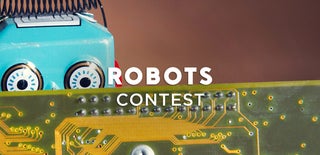Introduction: Perro-Bot
the best friend of the electronic engineer, the dog-bot
the body of a quadruped robot with 3 degrees of freedom per leg, very cheap and simple, that will serve you as a platform for all kinds of projects that you sound, being able to control it remotely or totally autonomous
Step 1:
this robot does from walking, sitting, standing, to running like crazy everywhere
Being able to open the legs, close them, move the hips, and the knees thanks to the most common servomotors that you can get from China
a 3D printed shell and leg segments made of balsa wood (so lightweight)
Step 2:
controlled with the powerful stm32f401 microcontroller
to control the 12 servomotors whit PWMs at the same time, and to be able to produce the walking sequences of the dog-bot
Step 3:
We start by looking at the images of the knee model to understand how the legs will move when stretched and flexed
and based on this experimental model we will design the final model, of which I attach the designs (use both solid works and freecad to design the mechanical parts)
Step 4:
As you can see in the image, each leg consists of 3 servomotors, for its movements, M1: to open the robot's legs, M2: to move the hip, and M3: to move the knee (but the latter is placed by the hip same leg and connected with a tendon bar to reduce the load on the same leg by leverage)
Step 5:
This robot is powered by 2 rechargeable 3.7V batteries in series which feed two voltage regulators to obtain fixed 5 volts with which the 12 servo motors and the microcontroller are distributed distributedly
Step 6:
These are the connections that I used to control the 12 servomotors at 12 PWMs, as you can see in the photo the front legs are up and the back legs are down, the kicks on the right side are represented on the right side and the left ones are those of their respective side, and the pins of the microcontroller with which they are connected can be seen very clearly, example: right front leg of the M1 motor: it is connected to the PE9 pin of the STM32F401 microcontroller, and so on with the other pins
Step 7:
The rigid segments of the legs (painted black) are made of balsa wood to be as light as possible, and as you can see in the video, the robot supports its own standing weight very well without any problem with only the force of its servomotors and the power source of the batteries that he carried with himself
Step 8:
Now is the time to have fun, now you can implement different sequences of steps, walking, running, playing, jumping obstacles, both remotely and autonomously, it depends on what you decide to do with this fun robotic platform what is my Perro-Bot
In the firmware I support the sysctick, to generate the constant interruptions that help to form the sequences of each particular task that the robot is developing at a certain moment
Any questions, or help that you require, please let me know
and I will gladly help you, whether it be the code, mechanical design, electronics, etc.

Participated in the
Robots Contest











